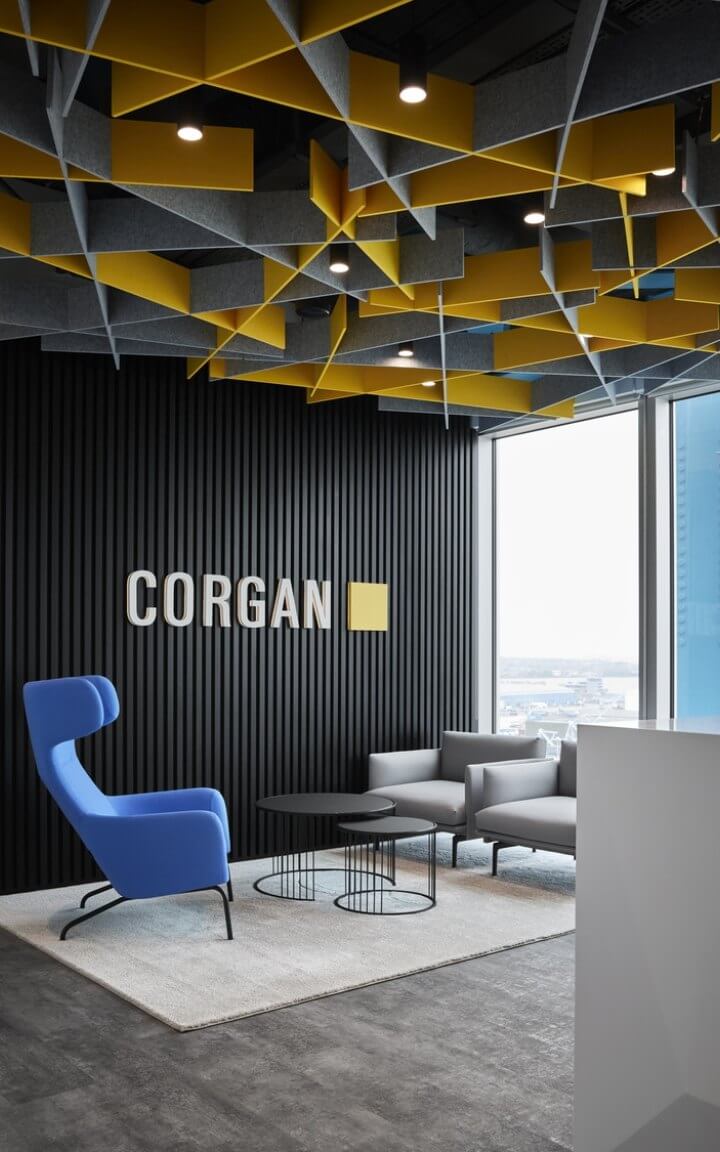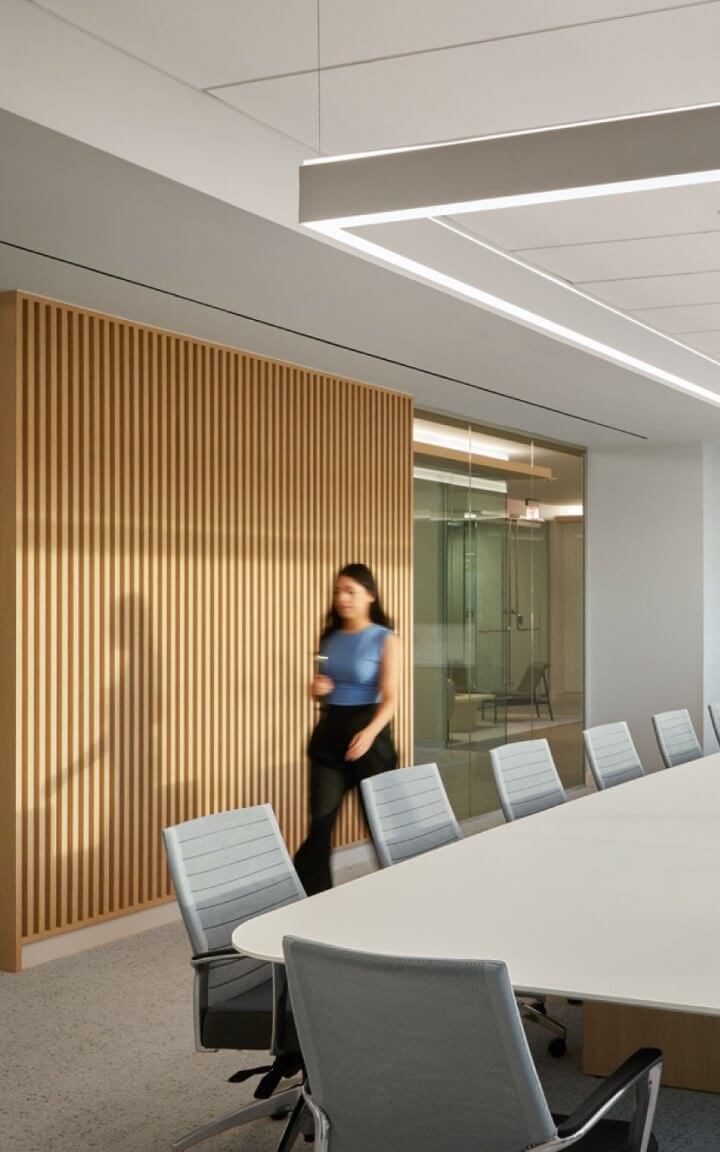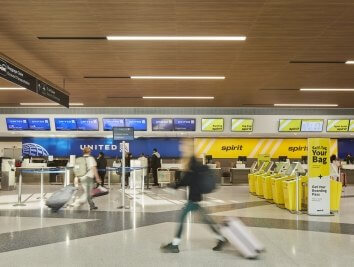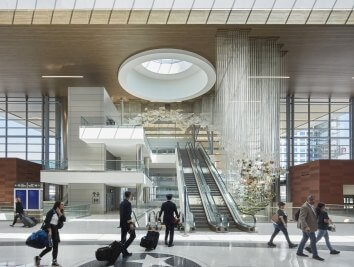Experiential Optimization: Filling In the Gaps

Not every facility that needs improvements has the budget for a full overhaul, so improving users’ satisfaction requires a strategic approach. Corgan’s research and innovation team Hugo sought a system to employ data to evaluate the user experience, identify areas for improvement, and make recommendations that can help clients optimize their facility while considering available resources and funding. From this, Experiential Optimization was born, a flexible service that offers clients a range of modules that can be scaled to any size of project.
Q&A with Samantha Flores
What led Corgan to start offering Experiential Optimization as a new service?
Over the years, we’ve applied a range of research methodologies and data gathering tools to gain comprehensive insights into the user experience. Experiential Optimization allows us to formalize that approach to be used across diverse projects to help designers continually improve the user experience. We understand that our clients often can't start from scratch when designing a facility or defining operations to meet every need of their brand, customers, or employees. This service helps us pinpoint real pain points and service gaps, enabling our clients to focus on upgrades that truly enhance the end-user experience.
What makes Experiential Optimization different than Corgan’s traditional post occupancy evaluation?
Both our post-occupancy evaluation (POE) and Experiential Optimization services assess building performance in relation to initial goals, focusing on the human experience. They both offer insights and recommendations that can enhance the quality of the built environment, occupant comfort, staff morale, productivity, operations, and can lead to significant cost savings.
However, there are key differences between the two. A POE typically occurs a year or two after project completion, focusing on spaces we've designed and often relies on user surveys to gather feedback with minimal disruption.
In contrast, our Experiential Optimization service is more comprehensive and can be applied not only to spaces we didn't design, but even those with decades of renovations. This service involves shadowing users, meticulously documenting behaviors and pain points, and measuring air quality metrics, which can change significantly over time. We also introduce new groups to the space to compare their experiences with those of long-term users. This deeper analysis helps us identify areas for improvement that may not be apparent through surveys alone.
How can a client decide what module is right for their facility? Do we help them select the best module?
To decide which module is right for their facility, it’s crucial to investigate the client’s specific goals for the Experiential Optimization service. Key questions might include:
- "Who is using our facility and which spaces are most utilized?"
- "Where can we achieve energy savings?"
- "What are the variety of upgrades necessary, and how can all users benefit?"
We work closely with our clients to set their goals upfront, which helps us identify the most impactful modules to deploy. For example, at Ontario International Airport (ONT), our goal was to understand what was and wasn’t working. We shadowed users to document their successes and frustrations, conducted a social media scan to capture unfiltered online feedback, and used an eye-tracking simulation with first-time users to gather quantitative data on their experience. This multi-faceted approach helped us identify overarching issues and distinguish between the needs of experienced users and new users, allowing us to recommend targeted improvements.
What can clients gain from Experiential Optimization that hasn’t already been addressed in the planning or POE process?
The key benefit of Experiential Optimization is that it provides a more holistic understanding of operational and user pain points. Often, we find that users may be acclimated to some issues, making them difficult to identify during initial discussions. By observing these pain points directly, we can devise solutions that address multiple issues, rather than just one perspective.
Additionally, our investigations often uncover insights that might have been overlooked from a design perspective. For example, in our ONT project, we discovered that while the plan appeared streamlined, it didn't always work effectively for end-users, which can significantly impact revenue. Identifying these issues early in the design process helps us avoid costly mistakes and ensure the design works for everyone involved. Informed decisions lead to better outcomes.
While the POE process evaluates the success of our solutions post-completion, pairing it with Experiential Optimization provides a comprehensive view from start to finish, capturing insights on the facility's performance throughout its lifecycle.
What does the process look like? How long does it take, and what deliverables do clients receive?
The process is tailored to each client, depending on the selected modules and data collection methods, but it follows a consistent framework: secondary research, primary research, and data synthesis.
We start with secondary research, analyzing existing reports, databases, and social media to gather initial insights. This phase typically takes two- to six weeks. Next, we conduct on-site primary investigations, including observations, user interviews, surveys, and journey simulations, to validate the secondary findings. This stage usually adds another two weeks.
After collecting the data, we analyze and synthesize the insights, creating a final report that outlines recommendations based on what can be achieved today, what can be addressed next with a few more resources and budget, and finally, what can be planned for in the future when whole-building solutions can be considered to achieve the desired user experience and other operational outcomes. This final phase can take four-to-eight weeks, depending on the project's size and scope and the number of data collection modules deployed.
At the end, we provide a detailed report that combines the findings from each research method, creating a holistic picture. This document helps clients share information with stakeholders, align departmental resources, and implement the recommendations strategically.
We’ve seen the aviation case study at ONT. How can Experiential Optimization services be applied to other sectors?
Analyzing user experience, gathering insights, and making recommendations for improvement is a highly flexible process that can be applied across any market sector or building type.
For instance, many schools in the U.S. are around 50 years old and haven't been renovated to support modern teaching methods. Experiential Optimization lets us evaluate how the current environment impacts learning and identify changes that can help improve test scores, increase teacher and student satisfaction, and reduce behavioral incidents.
On the other hand, hospitals frequently expand, upgrade, and refurbish different parts of their facilities. By pinpointing areas for improvement, we can increase patient recovery rates, boost provider satisfaction, and help optimize staffing needs, reducing the mental workload on providers. In commercial real estate, we can assess lease retention rates and develop strategies to enhance the leasing experience from both a building environment perspective and a tenant/owner policy relationship.
Hugo Experiential Optimization
Experiential Optimization Service
Hugo’s journey mapping service can be used to understand and strategize for user experience in all sector areas.
If you are interested in deploying this service or learning more, please contact Samantha.Flores [at] corgan.com (Samantha[dot]Flores[at]corgan[dot]com) or Melissa.Hoelting [at] corgan.com (Melissa[dot]Hoelting[at]corgan[dot]com) on the Hugo team.









